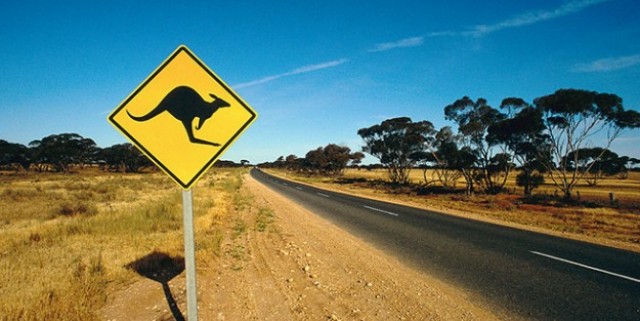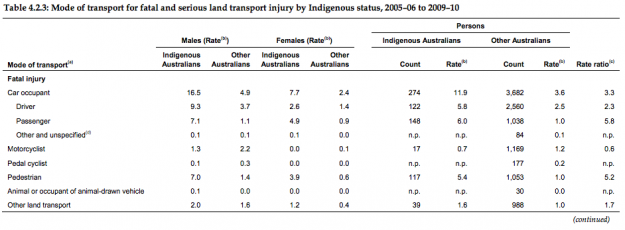
The Australian Institute of Health and Welfare (AIHW) has released a report that reveals Aboriginal and Torres Strait Islander Australians are more likely to be injured in land transport accidents than other Australians.
The report, compiled from data collected between 2005 and 2010, shows that Indigenous Australians are 2.8 times more likely to be fatally injured, and 1.3 times more likely to be seriously injured, in land transport accidents compared with other Australians.
Rates of injury and fatality for Indigenous males were three to four times higher than non-Indigenous males, with similar patterns observed for females. Of the total number of fatalities recorded, 27 per cent were suffered by drivers, and 32 per cent were suffered by passengers. For serious injuries among Indigenous Australians, 15 per cent of those injured were drivers and 19 per cent were passengers.


Both sets of results failed to mirror those of non-Indigenous Australians, with drivers more likely to be killed or harmed than passengers.
The statistics are partly attributed to the high proportion of Indigenous Australians living in remote outback areas, where rates of land transport accidents are highest.
"But even after taking the remoteness factor into account, Indigenous land transport fatalities were higher than expected," said AIHW spokesperson Professor James Harrison. One positive to come from the report was data showing the number of fatal accidents fell between 2005 and 2010.

'Land transport accidents' refers to a number of accidents, such as collisions between cars or between a car and an animal, drownings and pedestrian incidents. Accidents involving buses and trucks were separate to accidents involving cars.
The report did not include data from Tasmania and the ACT.





